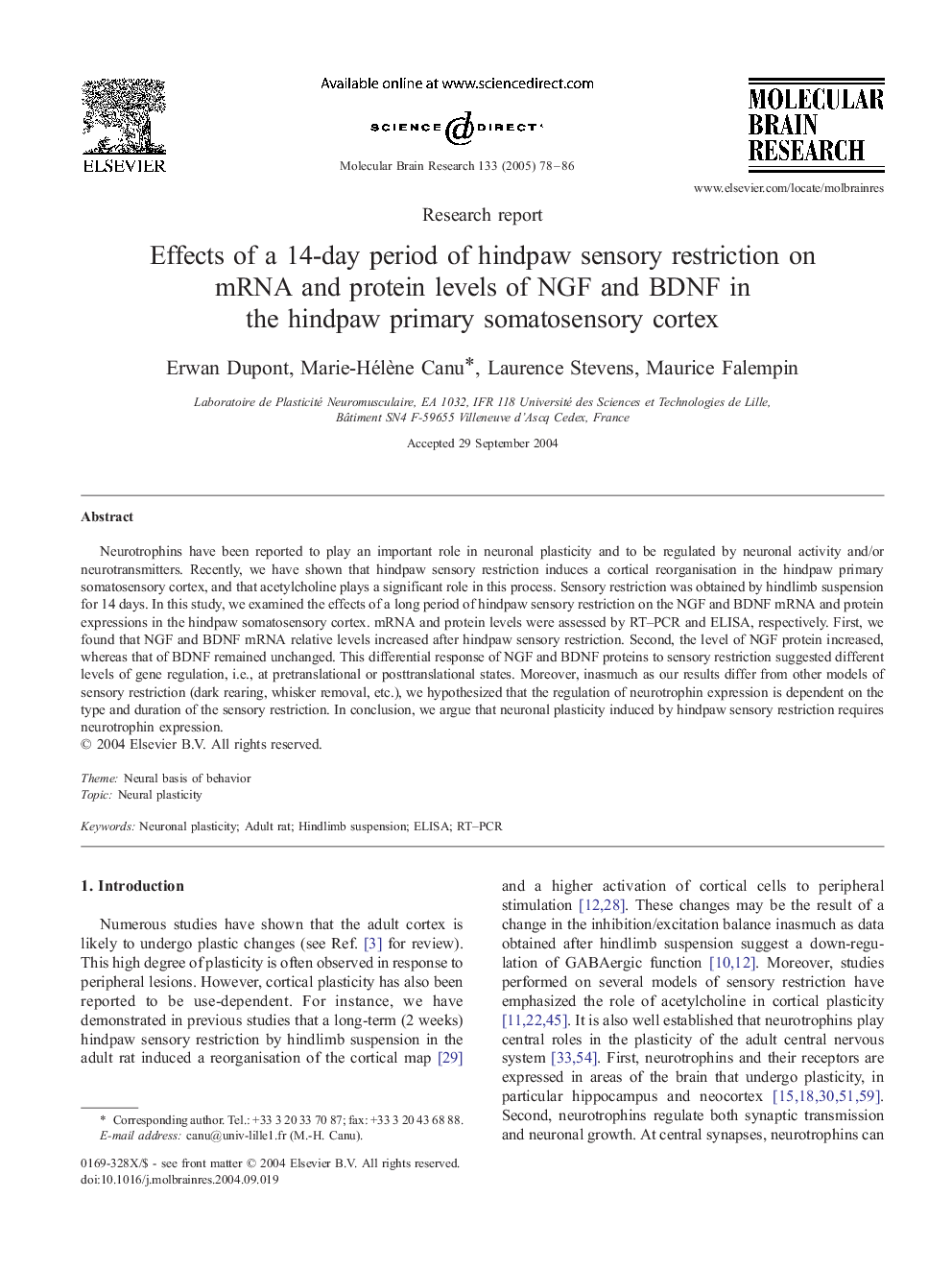| Article ID | Journal | Published Year | Pages | File Type |
|---|---|---|---|---|
| 9410851 | Molecular Brain Research | 2005 | 9 Pages |
Abstract
Neurotrophins have been reported to play an important role in neuronal plasticity and to be regulated by neuronal activity and/or neurotransmitters. Recently, we have shown that hindpaw sensory restriction induces a cortical reorganisation in the hindpaw primary somatosensory cortex, and that acetylcholine plays a significant role in this process. Sensory restriction was obtained by hindlimb suspension for 14 days. In this study, we examined the effects of a long period of hindpaw sensory restriction on the NGF and BDNF mRNA and protein expressions in the hindpaw somatosensory cortex. mRNA and protein levels were assessed by RT-PCR and ELISA, respectively. First, we found that NGF and BDNF mRNA relative levels increased after hindpaw sensory restriction. Second, the level of NGF protein increased, whereas that of BDNF remained unchanged. This differential response of NGF and BDNF proteins to sensory restriction suggested different levels of gene regulation, i.e., at pretranslational or posttranslational states. Moreover, inasmuch as our results differ from other models of sensory restriction (dark rearing, whisker removal, etc.), we hypothesized that the regulation of neurotrophin expression is dependent on the type and duration of the sensory restriction. In conclusion, we argue that neuronal plasticity induced by hindpaw sensory restriction requires neurotrophin expression.
Keywords
Related Topics
Life Sciences
Neuroscience
Cellular and Molecular Neuroscience
Authors
Erwan Dupont, Marie-Hélène Canu, Laurence Stevens, Maurice Falempin,
